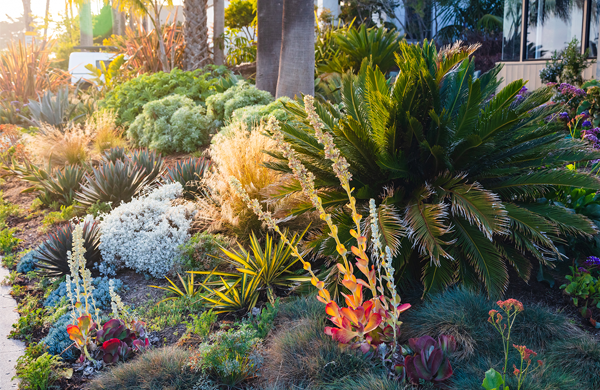
Over the next fifteen years, expect to see a massive change in how urban Californians use water. Green lawns will be replaced with native plants, inefficient appliances will be replaced by efficient counterparts, and water rates will change to reflect the true costs of inefficient use. Or at least, that is the plan.
The State Water Board is in the process of finalizing regulations appropriately titled “Making Conservation a California Way of Life.” These regulations incentivize water suppliers to invest in conservation, the cheapest and most environmentally friendly source of water, instead of focusing their investments in developing new supplies, like expensive and energy-intensive desalination. These conservation investments are likely to take the form of changed water rates to reflect the cost of inefficient water use more accurately, media campaigns, and rebate programs to upgrade inefficient appliances and trade out grass lawns for native California landscapes.
The process of developing the legislation mandating these regulations and the development of the regulations themselves has been long and drawn out, with many compromises along the way. Unsurprisingly and despite the initial compromises, these regulations continue to be attacked and weakened. Now, the regulations are incredibly flexible, full of opportunities for suppliers to increase their water budgets well beyond the initial efficiency targets. For this reason alone, many environmentalists are concerned that the final version of the regulations does not go far enough.
What’s worse, the Water Board has pushed back the compliance deadlines for the regulations, and under the latest draft, over 72% of water suppliers don’t have to save a single drop of water until 2035. Still, there is some good news. The regulations ramp up over time and the State Water Board has created an ultimate efficiency goal that accurately reflects where California needs to be on conservation, though that goal does not have to be met until 2040.
By increasing the efficiency targets and focusing all its sights on the long-term, the Board has ignored the impacts of drought and the importance of short-term water savings before 2040. This is impactful for several reasons.
During drought, California reacts by forcing immediate and harsh water conservation. Those programs and messaging are expensive to ramp up and people usually forgo watering their lawns altogether instead of doing so efficiently. The result is dead trees and expensive drought surcharges which often impact those who are conserving the most and low-income communities the hardest. Trees die when we react to drought, not when we prepare for it.
After droughts, water rates often increase to make up for the shortfall in predicted water sales, which also tend to impact disadvantaged individuals most. The more robust conservation programs are, the easier it will be for water suppliers to more accurately predict water sales, and the less rates will have to increase to play catch up.
While the Board has created a bright light at the end of the tunnel, it has also made the tunnel longer and darker. The Board plans to finalize the regulations by this summer and until then, CCKA plans to continually advocate at the Board for stronger regulations.
Stay informed of our policy work and our efforts to protect California’s waters by subscribing to California Coastkeeper Alliance’s monthly newsletter, becoming a lifetime member, or following us on social media: @CA_Waterkeepers.
Staff Attorney Cody Phillips advocates for statewide policies that protect water quality and access to clean water throughout California.



